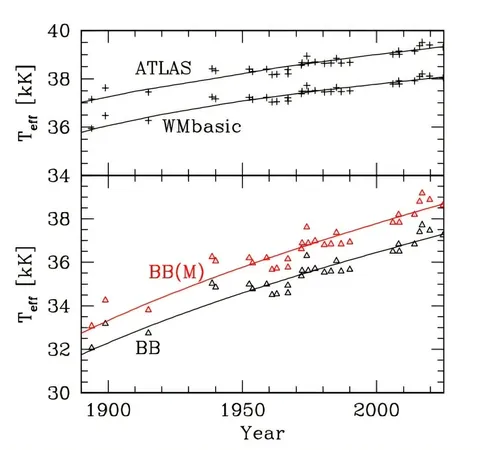
Unlocking the Mysteries of the Spirograph Nebula: A Cosmic Evolution Story
2025-08-28
Author: Li
The Spirograph Nebula: A Dazzling Celestial Wonder
Astronomers are turning their telescopes to the fascinating Spirograph Nebula, officially known as IC 418, a stunning planetary nebula located in the constellation Lepus, roughly 4,400 light-years from our planet. In a groundbreaking study published in The Astrophysical Journal Letters on August 20, researchers delved into the nebula's rapid evolution and heating, unveiling secrets of cosmic development.
What Makes Planetary Nebulae So Unique?
Planetary nebulae, like the Spirograph Nebula, result from stellar transformations as a star sheds its outer layers during its descent from a main sequence star to either a red giant or a white dwarf. Though these celestial phenomena are relatively rare, they offer vital clues about the chemical evolution of stars and galaxies.
Inside the Nebula: Unraveling Its Composition
The Spirograph Nebula boasts a mass of around 0.5 solar masses and spans an impressive radius of about 0.15 light-years. At its heart lies the central star, HD 35914, a radiant O-type star with a scorching temperature of 37,000 Kelvin. Previous studies revealed that this nebula is one of the youngest on record, with an estimated expansion age of just 1,200 years.
A New Era of Discovery: Insights from the Latest Study
Led by astronomer Albert A. Zijlstra from the University of Manchester, the latest research uncovered a striking trend: over the past 130 years, the strength of oxygen emission lines has doubled relative to hydrogen-beta lines, primarily due to the central star's increasing temperature.
The Implications of Rapid Heating
The central star's heating rate has been estimated at an astounding 20,000 to 30,000 K per year, prompting significant changes in the ionization structure of the nebula on decadal timescales. This rapid thermal evolution highlights how dynamic these cosmic entities can be, challenging existing theories of stellar evolution.
A Deeper Understanding of Stellar Evolution
The research reveals that the Spirograph Nebula is carbon-rich, with its central star evolving from an AGB (asymptotic giant branch) carbon star. Calculations suggest that the current mass of the central star is about 0.57 solar masses, while its progenitor likely had a mass ranging from 1.25 to 1.55 solar masses.
A Pioneering Study on Post-AGB Stars
In summarizing their findings, the researchers stated that this extensive 130-year observation provides essential new insights into the evolution of post-AGB stars. They emphasized the importance of reconsidering the lower mass cutoff for carbon-star formation at solar metallicity, suggesting that our understanding of stellar life cycles may need to evolve just as stars do.
This study not only enriches our knowledge of the Spirograph Nebula, but also propels the conversation forward regarding the lifecycle and development of stars in our universe.



 Brasil (PT)
Brasil (PT)
 Canada (EN)
Canada (EN)
 Chile (ES)
Chile (ES)
 Česko (CS)
Česko (CS)
 대한민국 (KO)
대한민국 (KO)
 España (ES)
España (ES)
 France (FR)
France (FR)
 Hong Kong (EN)
Hong Kong (EN)
 Italia (IT)
Italia (IT)
 日本 (JA)
日本 (JA)
 Magyarország (HU)
Magyarország (HU)
 Norge (NO)
Norge (NO)
 Polska (PL)
Polska (PL)
 Schweiz (DE)
Schweiz (DE)
 Singapore (EN)
Singapore (EN)
 Sverige (SV)
Sverige (SV)
 Suomi (FI)
Suomi (FI)
 Türkiye (TR)
Türkiye (TR)
 الإمارات العربية المتحدة (AR)
الإمارات العربية المتحدة (AR)